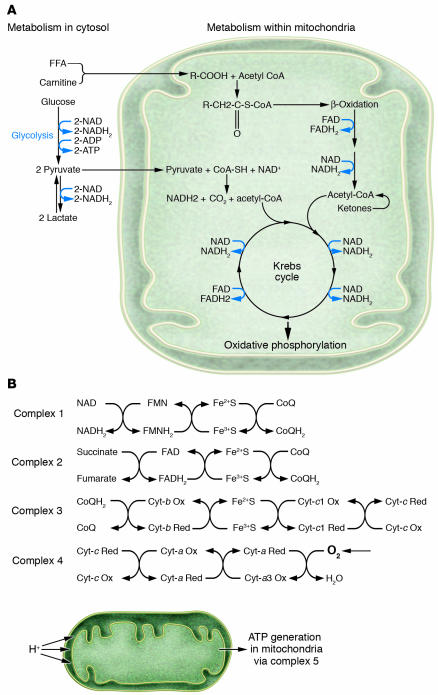Figure 1.
Role of oxygen in myocardial metabolism. (A) Schematic depiction of the pathways by which cardiac muscle utilizes various fuels, including fatty acids, glucose, lactate, and ketones. Glycolysis occurs in the cytosol and does not require oxygen. β-Oxidation of fatty acids, ketone metabolism, and the metabolism of glucose-derived intermediates all generate reduced flavoproteins (NADH2 and FADH2). (B) Schematic depiction of the process of oxidative phosphorylation in the mitochondria. Complexes 1_4 refer to specific electron transfer steps that occur in the mitochondria. A series of electron transfers among the flavoproteins (FMNH2, NADH2, FADH2), iron-sulfur, coenzyme Q, and the cytochromes a_c1, results in accumulation of protons in the space between the inner and outer mitochondrial membranes. This proton gradient provides the energy for ATP production via complex 5. Sustaining this crucial process requires the continuous availability of oxygen as the terminal electron acceptor in the chain. Fe2+S, reduced iron-sulfur; Fe3+S, oxidized iron-sulfur; FMN, flavin mononucleotide; cyt, cytochrome; CoQ, coenzyme Q.

